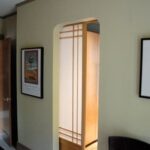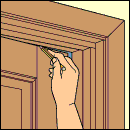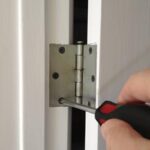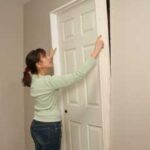This expert guide will show you how to buy interior doors, informing your choices by helping you understand the various types of doors available.
Because doors are highly visible, hardworking parts in a home’s interior, they deserve thoughtful attention when it comes time to buy new ones. The right doors will stand up durably to daily usage, minimize sound transfer between rooms, and add character or style to the home’s overall interior design. The following information will show you how to buy interior doors that are right for your home.
Interior doors come in many different styles and configurations and are made from a variety of materials. The type of doors you choose for your home can dramatically affect your home interior’s privacy, noise control, and overall visual impression.
You say you already have doors but they just don’t work right? Doors that don’t close or latch properly or that fit an opening poorly can be frustrating. Fortunately, many types of repairs are relatively easy for do-it-yourselfers to repair. For more, see Interior Door Repairs.
For information on exterior doors, please see Front Doors & Entry Doors.
Door Construction
Interior doors come in two basic types: flush and panel.
Flush doors have flat, smooth surfaces that are typically painted or stained with wood stains. They are basically nondescript and, as a result, blend in with a home’s interior (unless that interior is quite traditional or classic).
Hollow-core flush doors, installed in millions of homes for the past 50 years, are lightweight, low-cost versions of the flush door. These have an inner softwood frame surrounding cardboard honeycomb cores, and are faced with thin wood veneers. They are damaged relatively easily and allow considerable sound transfer.
Those surfaced with lauan mahogany veneer have particularly soft surfaces that do not receive finishes very well. Surface veneers of birch or other hardwoods are stronger and take stain or paint better.
Panel doors (shown below) are made from a framework of horizontal rails and vertical stiles that frame flat or raised wood panels or, in some cases, glass panes. This construction method is common for solid-wood doors because it minimizes the effects of wood’s tendency to shrink, warp, and swell with variations in humidity.
The best types are built with precisely fitted, interlocking sections, and they are significantly more expensive than flush doors. A good, less expensive alternative with much the same look as a wood door is a medium-density fiberboard (MDF) door. This type is solid and won’t swell or bind. In addition, it takes a finish well.
You can also buy wooden louvered and false-louvered doors. These handsome options are a great alternative to more conventional hollow-core interior doors.
Although new wood doors are sold unfinished and must be stained or painted, MDF doors come primed and ready to be painted.
You can also buy molded fiber composite doors. These are extremely durable and dimensionally stable. And some are designed to meet specific needs. For example, the composite door shown below is made to maximize sound control.
Door Sizes
Standard interior doors are 1 3/8 inches thick and 6 feet 8 inches tall. You can special order taller doors but, if you do, be prepared to pay a premium.
Standard interior door widths run from 24 inches wide (used for closets and small bathrooms) up to 36 inches. A door that is 36 inches wide is necessary for handicap accessibility. If you’re planning new doorways, be aware that many furniture pieces are too large to pass through doorways that are less than 30 inches wide.
Interior doors are sold pre-hung in frames or as doors only, called blanks or slabs. The latter type are for hanging in existing door frames or for mounting in a situation where the interior carpenter is up for the challenge of building the entire jamb set. They are sold without hinges, knobs, or locksets, but they may be ordered with a hole pre-bored for the lockset.
Pre-hung doors are the preferred choice in most situations because of the labor they save. The door comes mounted to a jamb set, with hinges mortised into the edges. When ordering this type, you specify the surface-to-surface thickness of the wall and the size and location of the holes for the lockset.
Interior Door Types
There are several types of interior doors, distinguished by the way they operate. Regardless of the type of doors, the frames are built basically the same, with the exception of pocket doors (see below). The frame consists of jambs, a casing, stops, a sill, and a threshold. The jambs form the sides and head of the frame, and the casing is support for the jambs. The stops are wood strips against which the door fits when closed.
Hinged Doors
Hinged doors are the standard in every home. Conventional hinged doors may be either right or left handed. A door that opens toward you and has the door knob on the right is right handed. A door hinged on the opposite side is left handed.
Most hinged doors have the same basic framework consisting of two stiles that run vertically and two or more rails that run horizontally.
Hinged doors are attached by two or three hinges to their frames. The hinges are on the hinge stile; the latch and lock are on the lock stile.
Folding Doors
Folding doors are often used to conceal a wide space where a conventional door’s swing would be awkward or restricted. Mounted in hinged-together pairs, folding doors combine the actions of both sliders and hinged doors, using both end pivots and overhead tracks.
These high-end European folding doors fold over to the sides of the opening, and then slide back into a recess so they don’t extend into the room. This is a custom set-up. You (or a cabinetmaker) buy the hardware and then add the doors.
Bypass Doors
Bypass doors, often used on closets or storage areas, are lightweight indoor sliders that hang from rollers that run along an overhead track. They’re typically mounted in pairs or threes; they bypass one another to allow access. Mirrored bypass doors are very popular for closets.
Wall-Mount Barn Doors
Interior “barn doors” that glide flat against the wall are popular where space is at a premium. Many styles are available, from rustic to contemporary.
For homeowners who want space-saving, smooth-gliding interior “barn doors,” Johnson hardware makes new DIY hardware kits. These wall-mounted tracks are designed to hold any door that weighs up to 200 pounds. Track lengths are from 48 to 96 inches long. Their soft-closing feature protects against pinched fingers. They are priced at just over $150, and they are protected by a lifetime warranty against manufacturing defects.
You can also buy high-end European flat-track barn door hardware such as the type shown below, from Håfele, and mount your own door with it.
Pocket Doors
Pocket doors are another type of slider that is ideal for places where there isn’t room for a door to swing. A pocket door slides into a space, or “pocket,” that is installed in the wall.
The frame of a pocket door has a side jamb that is split to receive the door, and a top jamb with a track built into it. Rollers mounted on the top of the door glide along this track. For more, see Pocket Doors Buying Guide.
Next See: How to Install a Door



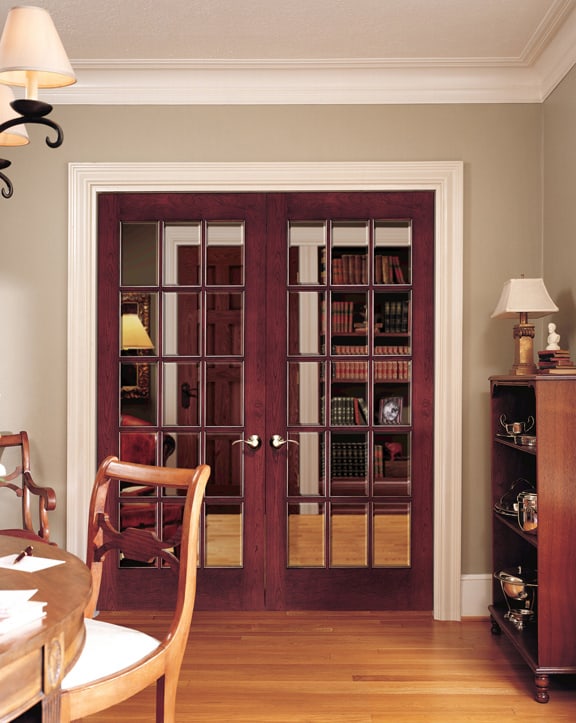
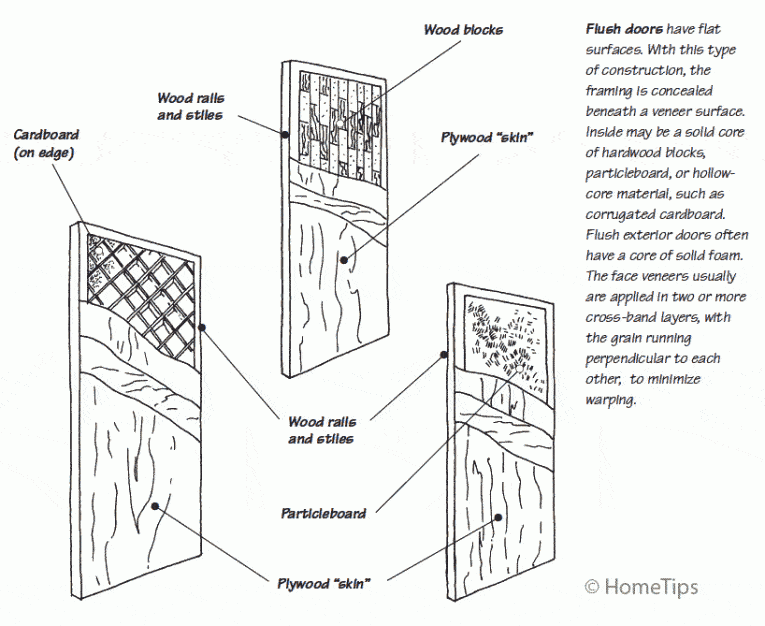
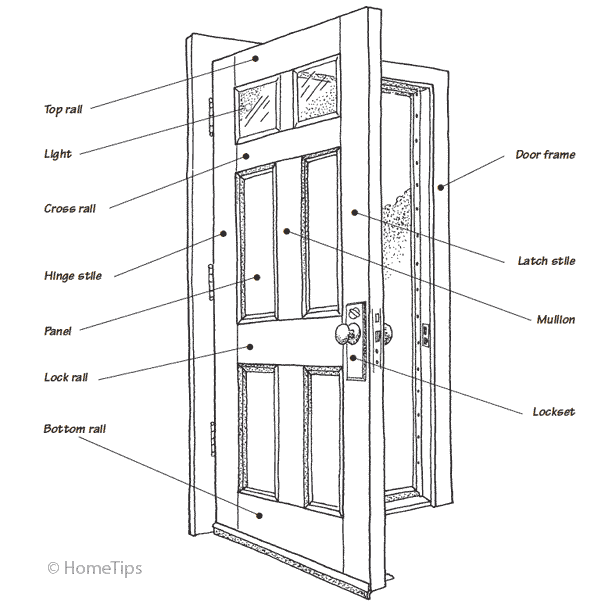
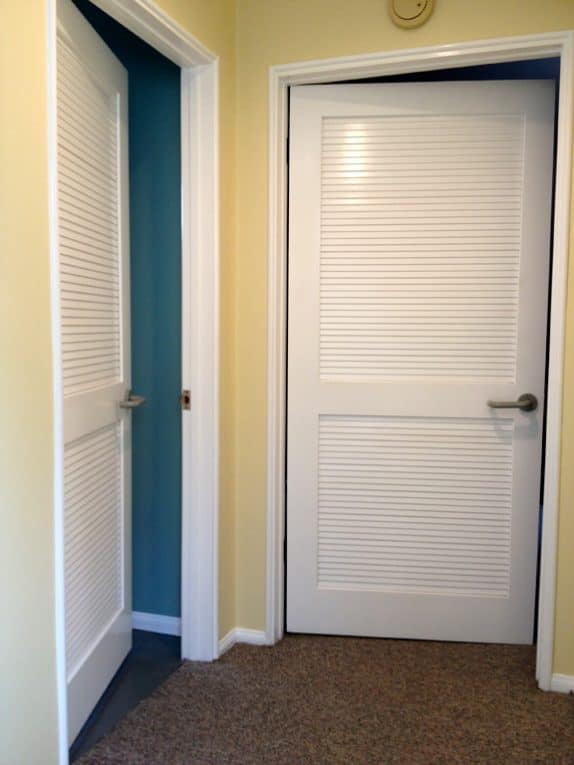
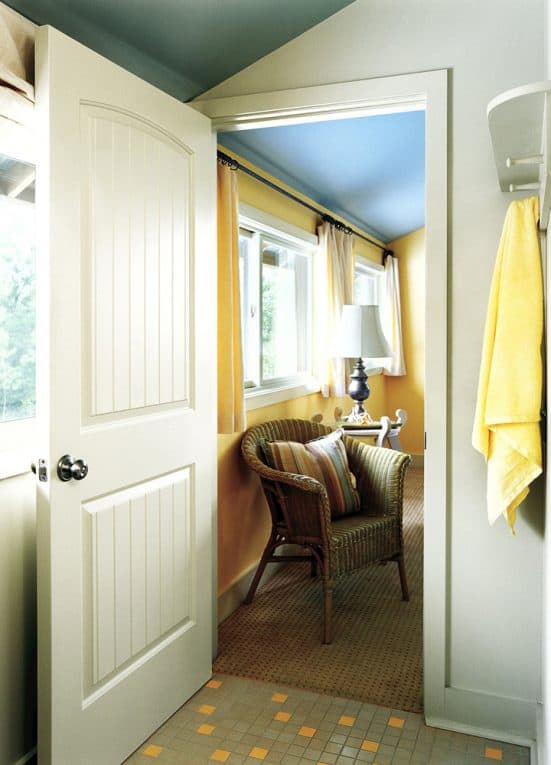
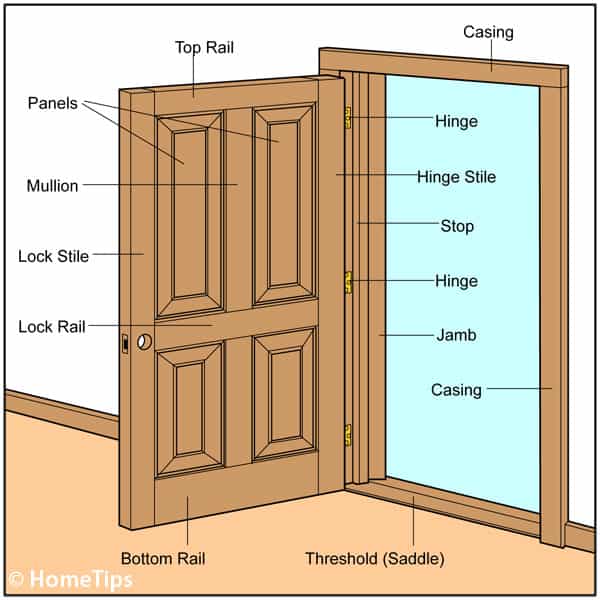
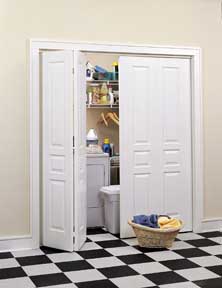
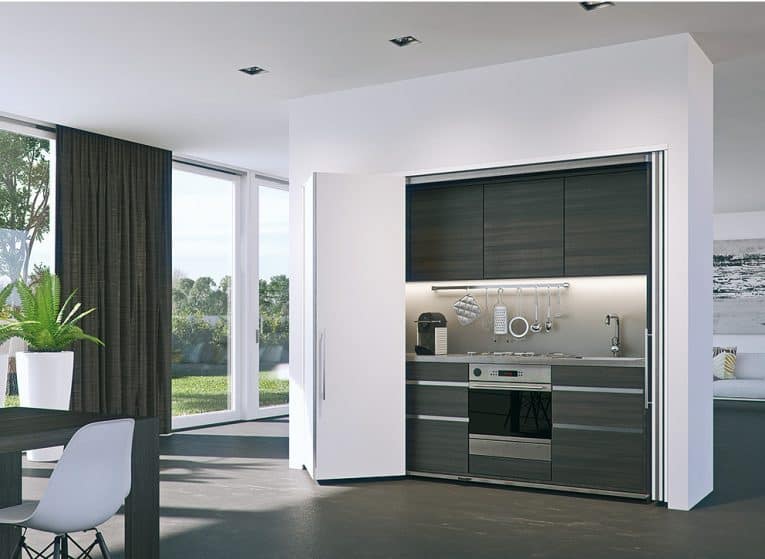
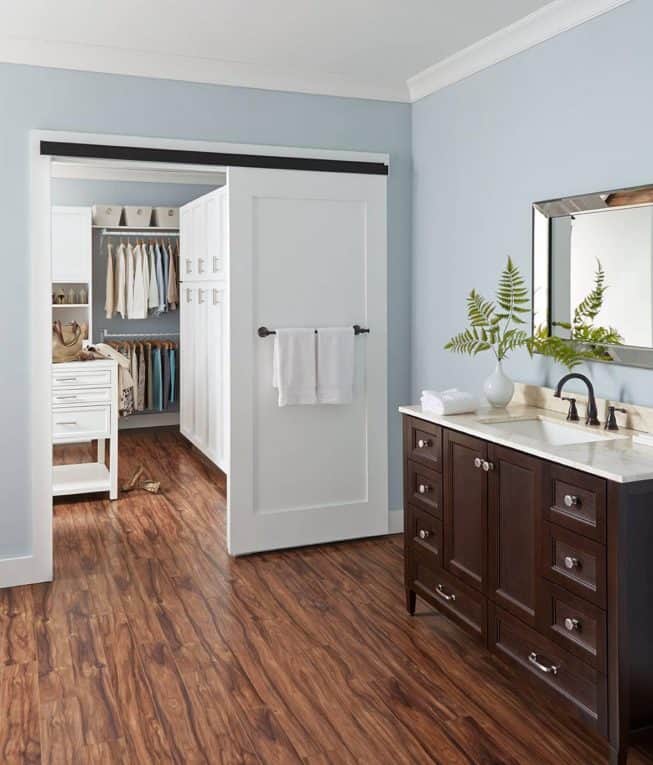
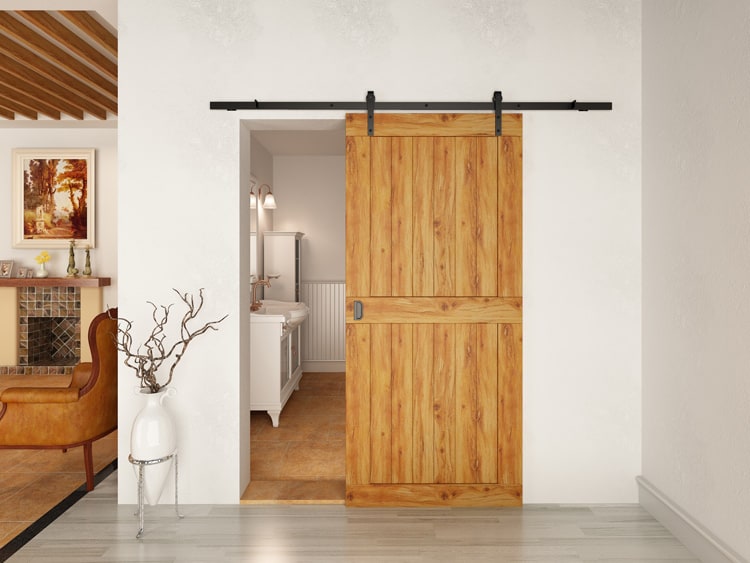
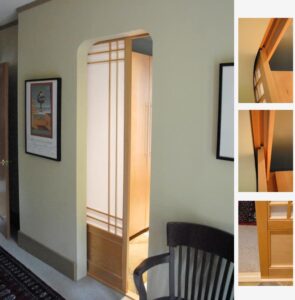
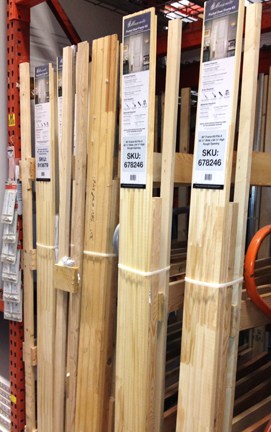
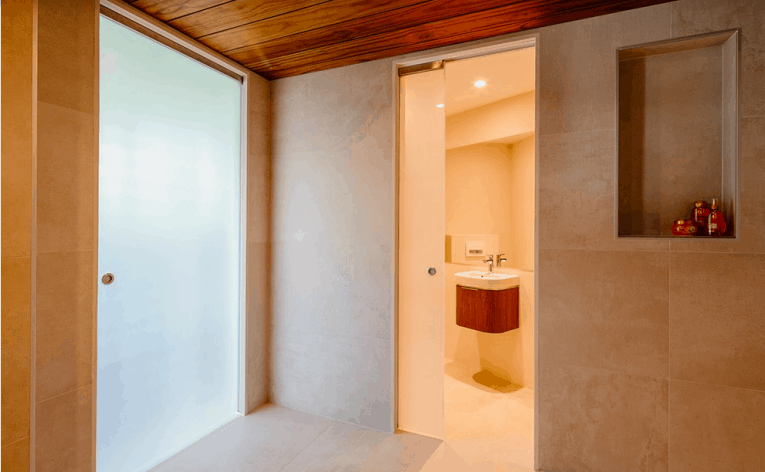




 Don Vandervort writes or edits every article at HomeTips. Don has:
Don Vandervort writes or edits every article at HomeTips. Don has:
